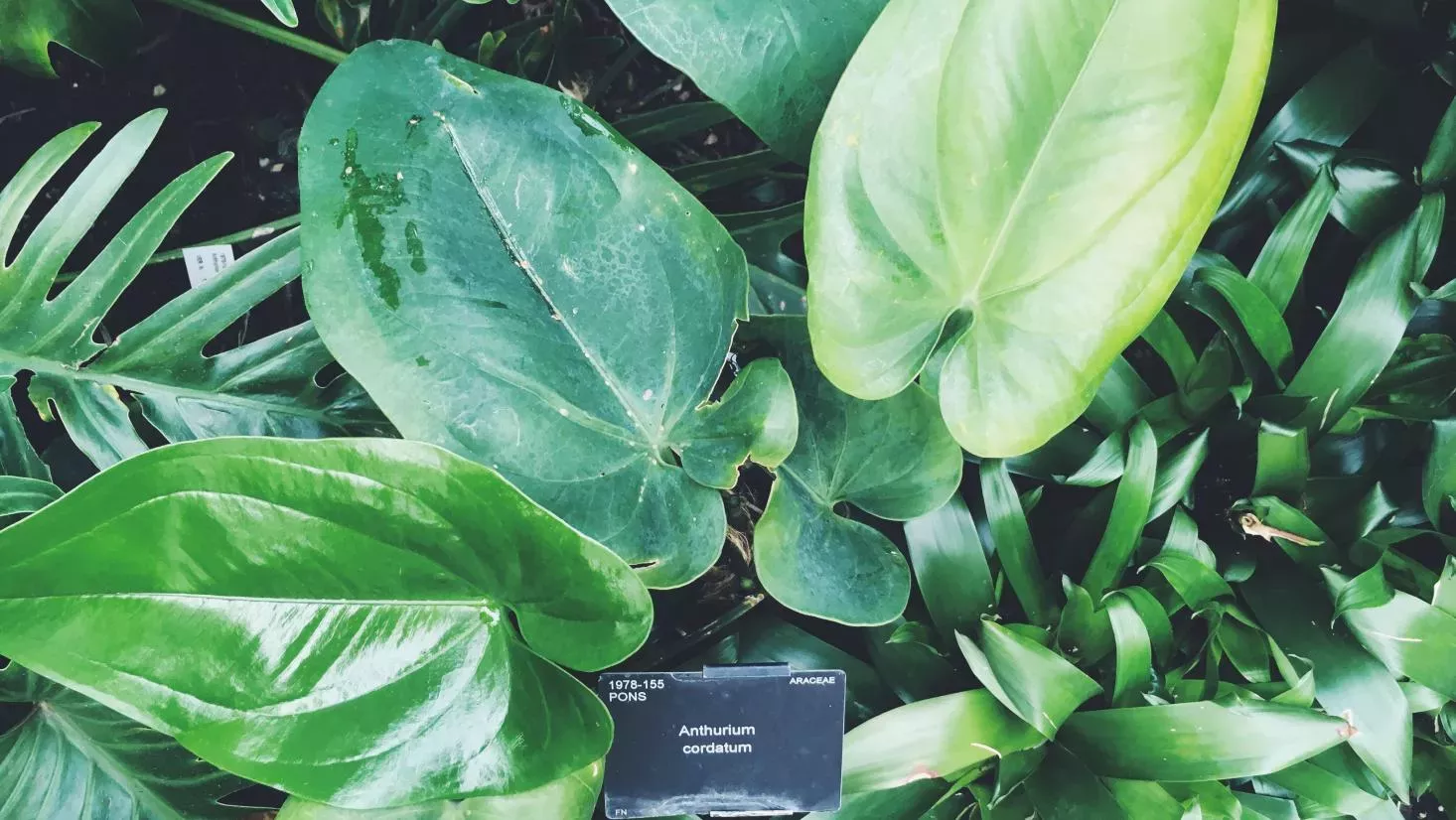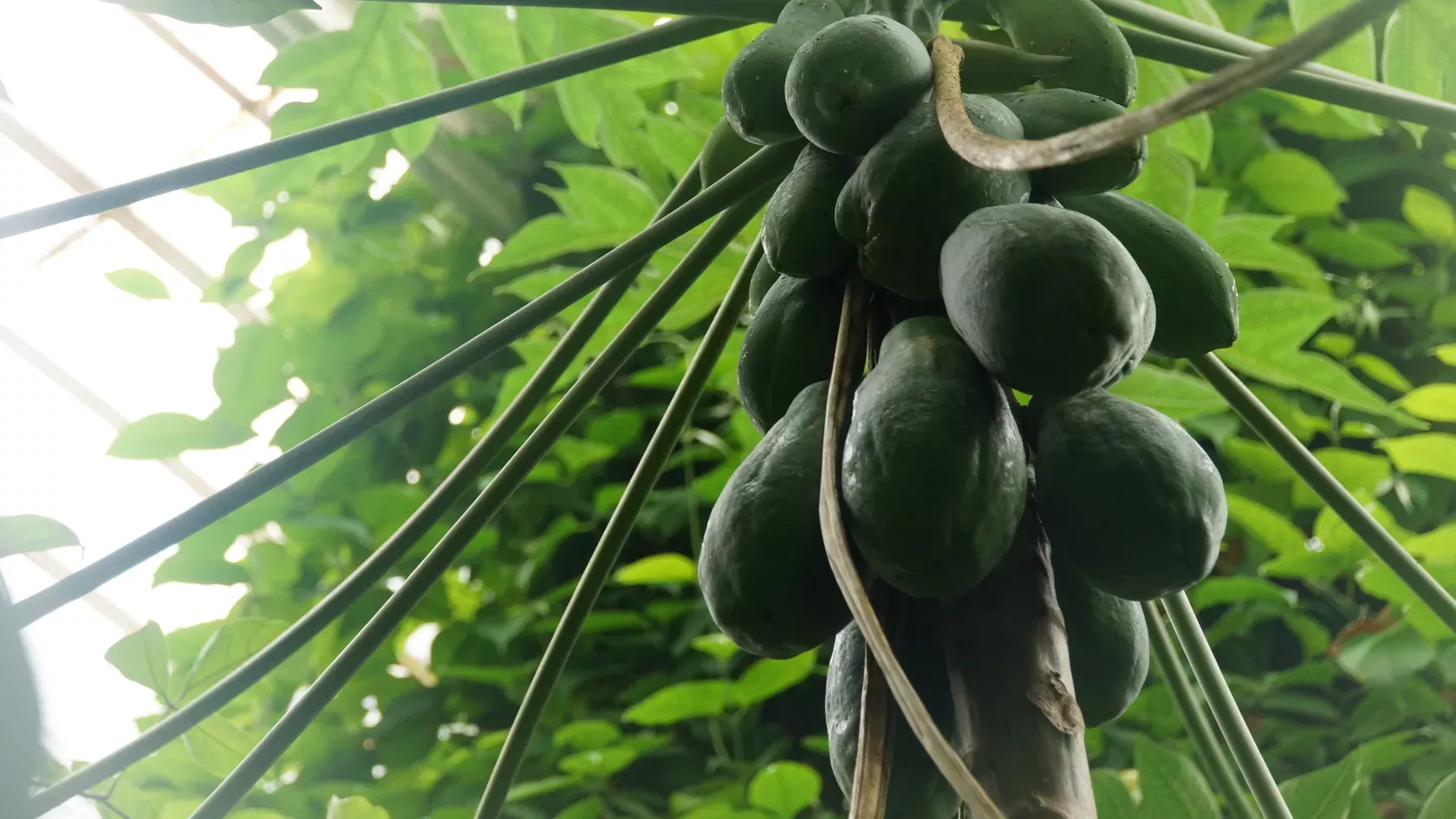24 August 2018
5 Caribbean plants bringing the tropics to the UK
From prickly cacti to tasty fruit, the Caribbean boasts an amazing variety of plant life. Here are our top picks from Kew’s glasshouses.

Flaming sword plant (Vriesea splendens)
This plant is quite the looker – it has a striking sword-like red cluster of flowers, and pretty marbled leaves.
But it has charm beyond its beauty. It forms a small cup in its centre that catches rainwater, which provides a habitat for frogs and insects.
But, the central cup is used for more than just accommodating small animals. This plant is unique because it takes in water using the central cup, rather than through its roots which are very small.
In fact, in its natural habitat it doesn’t even need soil to grow in and will happily grow on trees.
When the flowers of the flaming sword plant die, the plant dies too. But happily, it produces offshoots that grow from the centre and replace the parent plant.

Heartleaf anthurium (Anthurium cordatum)
This plant boasts heart-shaped leaves, which are thick, leathery, and rubber-like to the touch.
It’s thermogenic, which means it produces its own heat. Thermogenic plants can raise their temperature above that of the surrounding air.
But why would a plant growing in the Caribbean need to heat up?
This is actually one of its top tactics for attracting insect pollinators such as flies and carrion beetles.
By heating up, its foul-smelling fragrance is more pungent, which draws the insects in. Once attracted, the warm flowers are a tempting place for the insects to chill out and rest.

Papaya (Carica papaya)
This giant herbaceous plant is very fast growing, bearing flowers and then fruit within a year of planting.
Sometimes referred to as a ‘tree melon’, the fruit has a creamy orange flesh with black seeds at the centre.
You can find papaya growing throughout the Caribbean in back gardens, fields and in the wild.
When ripe, the fruit is usually eaten raw, and the unripe green fruit is cooked in curries and stews.
Papayas are packed full of the good stuff – they’re rich in vitamins A, B and C, as well as iron and calcium.

Royen’s Tree Cactus (Pilosocereus royenii)
These prickly succulents grow in volcanic, rocky coastal areas across the Caribbean, and have cleverly adapted to survive drought and dry weather.
They have shallow root systems that lie close to the surface of the ground. This means they can take in water from quick draining soils more easily.
They can grow as tall as eight metres and have leafless, thick-skinned branches which helps limit water loss.
When in bloom, they’re creatures of the night. Their fleshy white flowers only open in darkness - this is because the pollinators they want to attract, such as moths and bats, are more active at night.
Prickly pear (Opuntia quitensis)
The prickly pear is also known as the ‘paddle cactus’ due to its flat, paddle-like pads (called cladodes).
Like other cacti, prickly pears don't have leaves. Instead, spines grow from bumps on the stem.
They produce edible red fruit, which are especially popular with fruit-eating birds. They’re also eaten by humans, tasting a little like watermelon.
But if you’re going prickly pear picking, don’t get too close! They have short prickles that break off easily and irritate the skin.
The pads on this cacti have adapted so that they’re easily picked up by animals. The tiny spines on the pads are hard to see, which means segments of the pad can easily attach to fur or skin. When the segments touch the ground, they can take root and form new plants.
